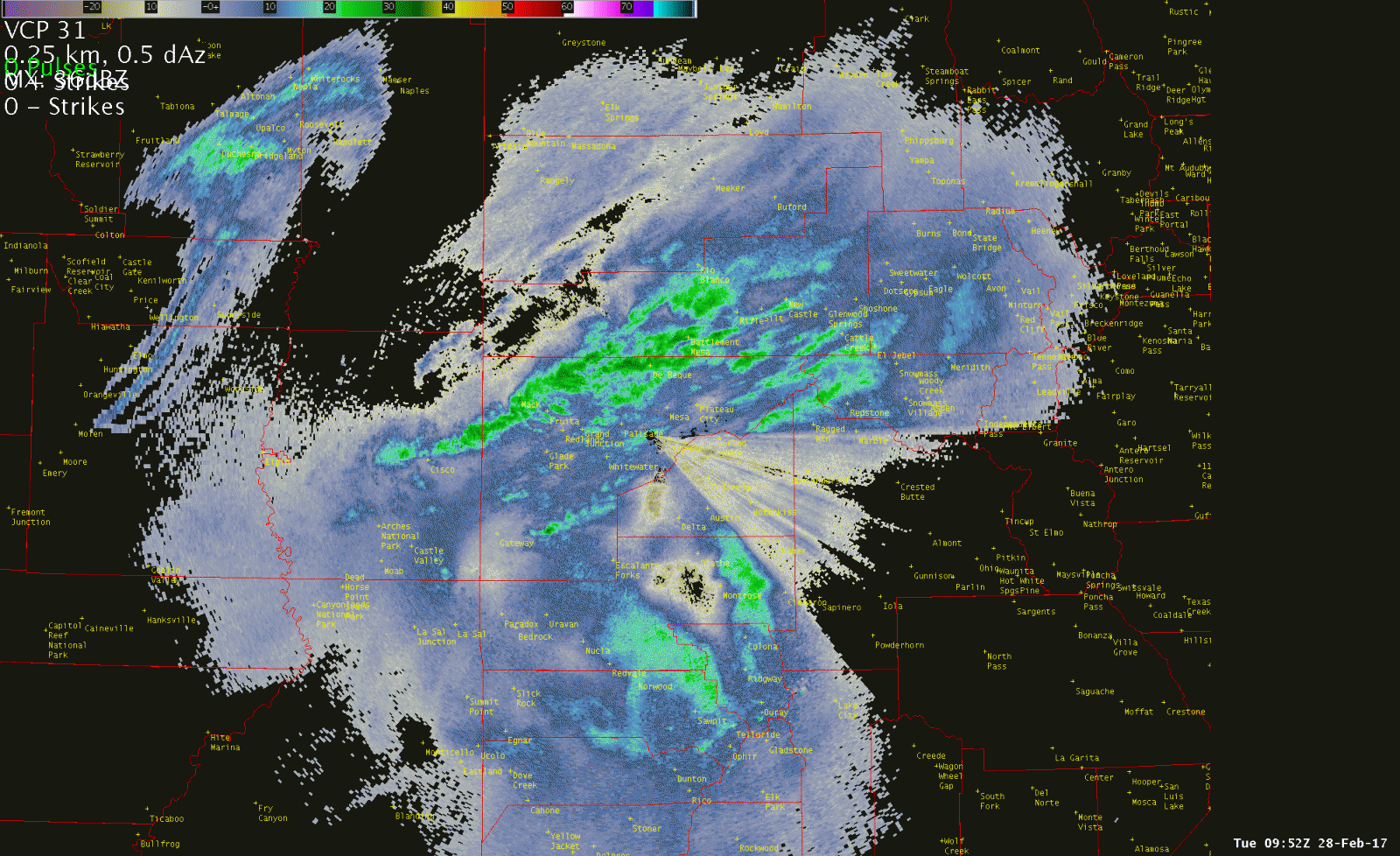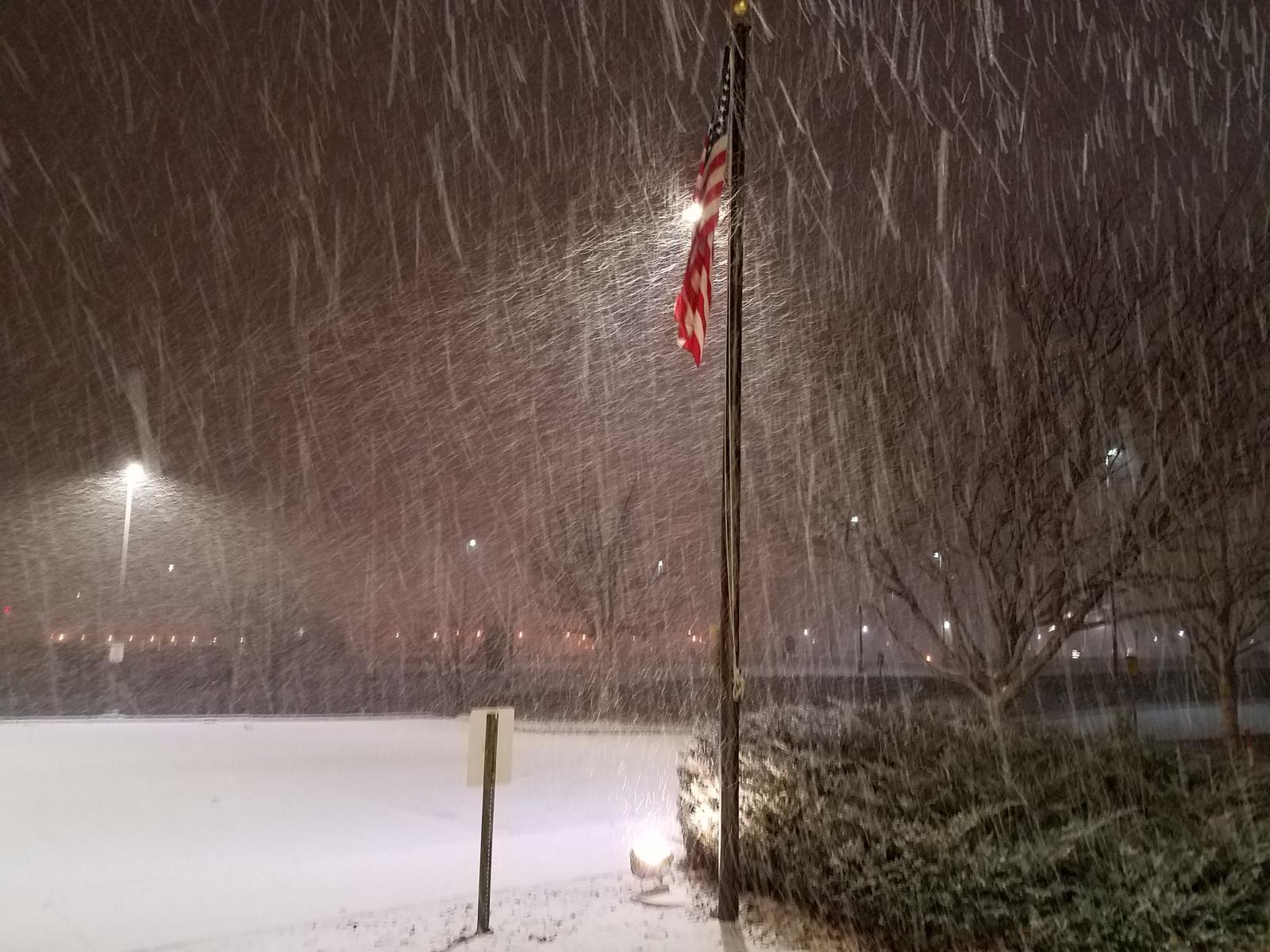
Thunderstorms, some severe, may produce heavy to excessive rainfall and isolated flooding over portions of the Southern Plains today and Saturday. Dry conditions, combined with gusty winds and low relative humidities will continue to support an elevated to critical fire weather threat in the Desert Southwest into to early next week. Read More >
February 2017 brought very warm weather to much of eastern Utah and western Colorado for the first three weeks of the month. In fact, several record high temperatures were recorded at several sites from February 8th through the 11th. The month was even on track to be the warmest on record in Grand Junction. However, a strong cold front arrived early on week four, sending temperatures plummeting. After the dust (actually snow) settled, Grand Junction ended the month as the 4th warmest on record for average temperatures.
Precipitation varied across the region with below normal precipitation recorded near Moab, near normal conditions around Grand Junction and slightly above normal over the mountains where snow continued to pile up.
The outlook for March shows odds favoring warmer than normal conditions with precipitation leaning toward drier conditions.

With Meteorological Winter coming to an end and Spring moving into the picture, it's time to look back at this past Winter Season. The slides below show the highest and lowest temperatures from December 1, 2016 through February 28, 2017. In addition, precipitation totals and departures from normal are presented.
Temperature Extremes from December 1, 2016 through February 28, 2017
Precipitation Totals and Departures from Normal (Dec 1, 2016 to Feb 28, 2017)
Overview
|
A strong winter storm brought widespread rain and snow to much of Eastern Utah and Western Colorado between February 26 and 28, 2017. This complex storm system arrived over the region from two different areas. Moisture, associated with another "atmospheric river" got swept northeast across our region, bringing rain and snow to Southeast Utah and Southwest Colorado. |
 Radar image showing cold front aligned near Interstate 70 (I-70) during the early morning hours of February 28, 2017. Moderate to heavy snow was reported under the darker green bands. |
 |
 |
 |
| Dolores, CO (Credit: Mike Hill) |
Highway 160 near Cortez (Credit: CDOT) |
Near Pagosa Springs, CO (Credit: Jenny Lynn Heckmann) |
Photos & Video:
Snow photos from around the area
 |
 |
 |
 |
| Collbran, CO (Credit: Karen Clifton) |
Fruitvale, CO (Credit: John Painter) |
Rifle, CO (Credit: Patti Huffmon-Soles) |
Mancos, CO (Credit: Krista Boardman) |
More snow images from around the region
.jpg) |
 |
 |
 |
| Pagosa Springs, CO (Credit: Jenny Lynn Heckmann) |
Snow falling at the Weather Forecast Office in Grand Junction, CO (Credit: Jeff Colton) |
After the Storm photo of fresh snow along Highway 65 on the Grand Mesa (Credit:CDOT) |
Near Pagosa Springs, CO (Credit: Jason Coward) |
Storm Reports

 |
Media use of NWS Web News Stories is encouraged! Please acknowledge the NWS as the source of any news information accessed from this site. |
 |